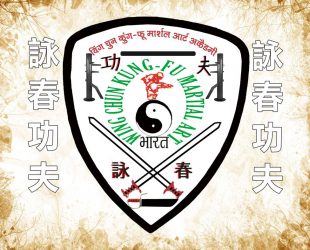In the annals of martial arts history, Bruce Lee stands as an icon—a figure whose influence transcends disciplines and generations. While he’s celebrated for his groundbreaking philosophy and formidable skills in Jeet Kune Do, Lee’s journey into martial arts mastery began with the ancient Chinese art of Wing Chun.
Wing Chun, a style known for its practicality and efficiency, became the foundation upon which Bruce Lee built his martial arts legacy. Born in San Francisco in 1940, Lee’s introduction to Wing Chun came during his formative years in Hong Kong under the tutelage of legendary master Ip Man. It was through this rigorous training that Lee honed his techniques, developing speed, precision, and an understanding of the principles that would define his approach to combat.
At the heart of Wing Chun is the concept of directness—stripping away unnecessary movements to deliver swift, effective strikes. This philosophy resonated deeply with Lee, who embraced its core tenets and sought to refine them further. His dedication to Wing Chun was unwavering, even as he explored other martial arts disciplines and eventually formulated his own system, Jeet Kune Do.
Lee’s interpretation of Wing Chun was dynamic and adaptive, reflecting his belief in constant evolution and personal expression. He recognized the need to adapt traditional techniques to suit individual strengths and circumstances—a principle that would become central to his martial arts philosophy.
One of the most distinctive aspects of Lee’s Wing Chun practice was his emphasis on fluidity and economy of motion. He eschewed rigid forms in Favor of fluid transitions, blending elements of Wing Chun with other styles to create a seamless, integrated approach to combat. This innovative approach laid the groundwork for Jeet Kune Do, which Lee described as “the style of no style.”
Throughout his life, Lee remained deeply connected to Wing Chun, incorporating its principles into his teaching and training. Even as he achieved global fame as a martial arts film star, he continued to credit Wing Chun as the bedrock of his martial arts journey.
Lee’s impact on Wing Chun extends far beyond his own practice. Through his films, writings, and teachings, he introduced Wing Chun to a global audience, inspiring countless practitioners to explore its principles and techniques. Today, Wing Chun schools can be found in cities around the world, each carrying forward the legacy of Bruce Lee and Ip Man.
In reflecting on Bruce Lee’s legacy as a Wing Chun practitioner, it’s clear that his influence transcends the boundaries of any single martial art. He embodied the spirit of innovation and self-discovery, constantly pushing the limits of what was thought possible. For Lee, Wing Chun was more than just a fighting style—it was a philosophy, a way of life, and a path to self-realization.
As we continue to study and practice the art of Wing Chun, we do so in the footsteps of a true master—a man who revolutionized the world of martial arts and left an indelible mark on history. Bruce Lee’s journey from a young student in Hong Kong to a global icon serves as a testament to the power of dedication, perseverance, and the enduring legacy of Wing Chun.
Sifu Dr. Sonu Kumar Giri
“Wing Chun Kung Fu Martial Art Academy, India”

